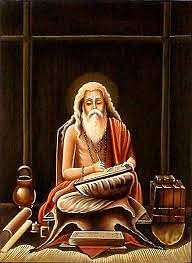UPSC Exam > UPSC Notes > History for UPSC CSE > Nitin Singhania Summary: Science and Technology Through the Ages- 2
Nitin Singhania Summary: Science and Technology Through the Ages- 2 | History for UPSC CSE PDF Download
Other Important Contributors of Ancient and Medieval India
Vararuci
- Vararuci is a notable character in Kathasaritsagara by Somadeva Bhatta (11th century AD).
- According to the folktale Parayi Petta Panthirukulam, Vararuci was one of the nine gems in the court of Vikramaditya (57 BC-78 AD).
 Vararuci
Vararuci
Acharya Pingala (3rd—2nd century BC)
- Ancient Indian mathematician and poet known for Chandalisastra (Pingala-sutras), the earliest treatise on Sanskrit prosody.
- First to introduce the concept of binary numbers and worked on Fibonacci numbers, initially called Matrameru.
 Acharya Pingala
Acharya Pingala
Lagadha Muni (1200 BC):
- Ancient Indian mathematician and astronomer credited for writing Vedanga Jyotisha, describing the winter solstice around 1400 BC.
 Lagadha Muni
Lagadha Muni
Jivaka (5th century BC):
- Legendary physician of ancient India, known as the 'Medicine King' and personal physician of King Bimbisara and Lord Buddha.
 Jivaka
Jivaka
Chaturveda Prithudaka Swami (830-890):
- Ancient Indian mathematician known for his work on solving equations and commentary on Brahmagupta's work.
Aryabhata II (920-1000):
- Indian astronomer and mathematician, author of Maha-siddhanta.
 Aryabhatta ||
Aryabhatta ||
Narayan Pandit (1340-1400):
- Medieval Indian mathematician and author of Ganita Kaumudi in 1356, discussing mathematical operations.
Mahendra Siri (1340-1400):
- Jain astronomer of the 14th century, patronized by Firuz Shah Tughlug, known for writing Yantraraja.
Madhava of Sangamagrama (1340-1425):
- Founder of the Kerala school of astronomy and mathematics, made significant contributions to infinite series, trigonometry, algebra, and geometry.
Vatasseri Parameshvara Nambudiri (1380-1460):
- Ancient Indian mathematician and astronomer associated with the Kerala school, revised astronomical computational parameters known as Drgganita.
Kelallur Nilakantha Somayaiji (1444-1545):
- Mathematician and astronomer associated with the Kerala school, known for works like Tantrasamgraha and Aryabhatiya Bhasya.
Chitrabhanu:
- 16th-century mathematician of the Kerala school, noted for a concise astronomical manual called Karana.
- Student of Nilakantha Somayaji.
Melpathur Narayana Bhattathiri (1560-1646/1666)
- Associated with the Kerala school, notable works include Prakriya-sarvasvam and Narayaneeyam.
 Melpathur Narayana Bhattathiri
Melpathur Narayana Bhattathiri
The document Nitin Singhania Summary: Science and Technology Through the Ages- 2 | History for UPSC CSE is a part of the UPSC Course History for UPSC CSE.
All you need of UPSC at this link: UPSC
|
111 videos|495 docs|173 tests
|
FAQs on Nitin Singhania Summary: Science and Technology Through the Ages- 2 - History for UPSC CSE
| 1. Who were some of the important contributors to science and technology in ancient and medieval India? |  |
Ans. Some important contributors to science and technology in ancient and medieval India include Aryabhata, who made significant contributions to mathematics and astronomy, and Charaka, who is considered the father of Ayurveda, the traditional Indian system of medicine. Other notable contributors include Nagarjuna, who made advancements in metallurgy, and Sushruta, who is known for his pioneering work in the field of surgery.
| 2. What were some of the scientific achievements of ancient and medieval India? |  |
Ans. Ancient and medieval India witnessed several scientific achievements. Aryabhata's work in mathematics and astronomy, including the concept of zero and the calculation of the value of pi, were significant contributions. Sushruta's surgical techniques, such as plastic surgery and cataract surgery, were highly advanced for their time. Nagarjuna's metallurgical innovations, such as the extraction of metals from ores, also played a crucial role in the development of science and technology in India.
| 3. How did ancient and medieval Indian scientists contribute to the field of medicine? |  |
Ans. Ancient and medieval Indian scientists made significant contributions to the field of medicine. Charaka and Sushruta were pioneers in Ayurveda and surgery, respectively. Charaka's treatise on Ayurveda, known as the Charaka Samhita, provided detailed explanations of various diseases and their treatments. Sushruta's work in surgery included descriptions of various surgical procedures and the use of specialized tools. These contributions laid the foundation for the development of medical knowledge in India.
| 4. What were the key advancements in astronomy and mathematics in ancient and medieval India? |  |
Ans. Ancient and medieval India witnessed significant advancements in astronomy and mathematics. Aryabhata, in his work Aryabhatiya, introduced the concept of zero and the decimal place value system. He also calculated the value of pi accurately. Indian astronomers, such as Varahamihira and Brahmagupta, made important contributions to the understanding of planetary motion and mathematical calculations. Their works laid the foundation for future advancements in these fields.
| 5. How did the advancements in science and technology in ancient and medieval India impact society? |  |
Ans. The advancements in science and technology in ancient and medieval India had a profound impact on society. The development of Ayurveda and surgical techniques improved healthcare practices and led to the well-being of individuals. The mathematical and astronomical advancements provided a better understanding of the universe and influenced various fields, including navigation and architecture. The metallurgical innovations contributed to the growth of industries and trade. Overall, these advancements played a crucial role in shaping the society of ancient and medieval India.

|
Explore Courses for UPSC exam
|

|
Signup for Free!
Signup to see your scores go up within 7 days! Learn & Practice with 1000+ FREE Notes, Videos & Tests.
Related Searches























